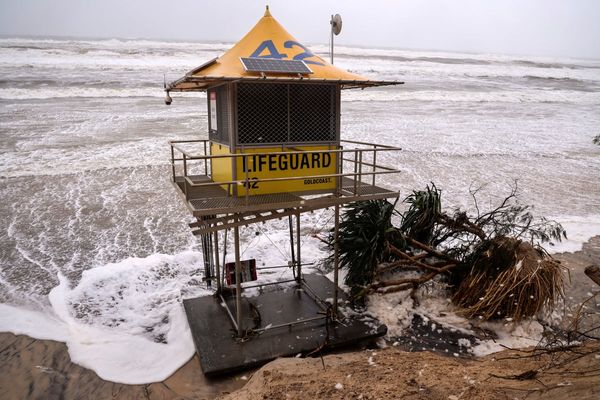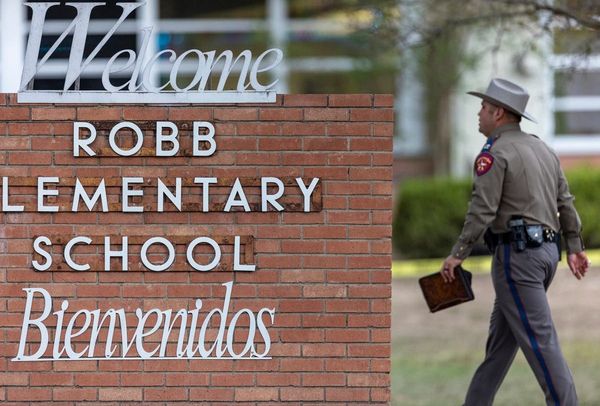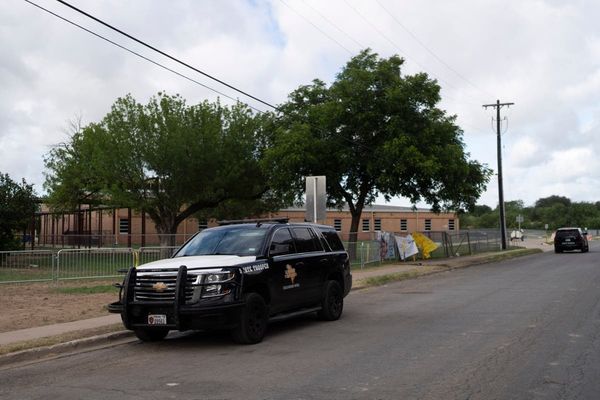
It took more than an hour for police officers to enter and stop the gunman who killed 19 children and two teachers at Uvalde’s Robb elementary school last Tuesday in Texas.
In that time, 18-year-old Salvador Ramos fired more than 100 shots while as many as 19 police officers stood outside waiting and desperate parents tried to break victims out of the school windows. It has been reported that one teacher and several children placed 911 calls while the gunman was inside the building.
The reasons for the delay in entering the school remain unclear, and the police department has been criticized for its failure to adequately explain the events, releasing contradictory reports in recent days.
The officers on duty had received active shooter training just two months before the massacre, prompting questions from parents, politicians and public safety officials about exactly what officers should have done and casting doubt on how effective such training is in reality.
What happened?
It was 11.31am when law enforcement first received a call saying someone had crashed their truck across the road from Robb elementary school, and was now approaching the building with a gun.
A minute later, Ramos was in the school parking lot, shooting. He entered the school, unobstructed – despite initial claims that he was engaged by an officer on site.
The first officers arrived to the school parking lot just minutes later, and three officers followed behind Ramos, getting grazed by gunfire in the process. They did not continue to pursue him. By noon, 19 officers were on site. Reasons given as to why it took another 50 minutes to kill the suspect have differed, depending on who has given the account.
In interviews after the incident, Uvalde’s public safety department spokesman, Lt Chris Olivarez, suggested police officers feared for their own lives. “They are receiving gunshots … At that point, if they proceed any further not knowing where the suspect was at, they could’ve been shot, they could’ve been killed, and that gunman would have had an opportunity to kill other people inside that school,” Olivarez told CNN’s The Situation Room.
The police also originally claimed to have engaged the gunman – this has now been found to be untrue – and that a teacher had propped a door open, letting the gunman in. But it has now been clarified that the teacher closed the door behind her while calling police and it did not lock automatically as it should have.
Parents who had grown panicked and desperate during the shooting were reprimanded for trying to break students and teachers out through windows. They have also offered conflicting accounts to those of police officers – claiming officers were waiting outside for protective shields.
Steven McCraw, the Texas director for public safety, has since claimed that some of the confusion centered on whether there was a hostage situation in the building – officers often use a different response to hostage situations, to prevent the possibility of more bloodshed.
So what should have happened?
What are the guidelines for an active shooter situation?
“A first responder unwilling to place the lives of the innocent above their own safety should consider another career field.” Those are the words, from an active shooter training manual used to train Uvalde’s school police on 21 March 2022, that have been repeated again and again since the shooting on Tuesday.
They refer to the lessons post-Columbine, the high school shooting in 1999 that led to the deaths of 15 people (including the suicides of both shooters). Before Columbine – which was the most deadly US mass shooting in history at the time – officers had been taught to form a perimeter around the school and wait for backup in the event of a school shooting, not unlike what allegedly happened at Uvalde on Tuesday. But after Columbine, law enforcement officials learned that not going in and directly confronting the shooter costs precious minutes and possibly lives.
The training materials encourage officers to confront the attacker in an active shooter situation, driving them away from victims, isolating and distracting them, even when it means putting themselves in harm’s way: “If they are engaged with the officer(s) they will be less capable of hurting innocents,” the manual says.
If officers are at the scene alone, they must go in alone, it says. “Time is the number one enemy during active shooter response … The best hope that innocent victims have is that officers immediately move into action to isolate, distract or neutralize the threat, even if that means one officer acting alone.”
The manual makes clear that not doing so will cost lives. “The number of deaths in an active shooter event is primarily affected by two factors: How quickly the police or other armed response arrives and engages them; How quickly the shooter can find victims,” it states.
The confusion arises around hostage situations – where a gunman may take victims hostage and threaten to inflict more harm if approached. McCraw has said it was wrong to treat the shooting as a hostage situation, probably because gunshots could still be heard from within the building while officers waited outside, and calls from children reporting further gunshots were made to 911 during that time.
But while the training materials stress that “stopping the killing” is the officer’s first priority, it also warns that “barricaded subjects pose the greatest threat when attempts are made to enter the space and subdue them”.
What does this mean?
Police officers trained to deal with active shooting situations have frequently been criticized for not going in quickly enough; for mis-assessing the situation; or failing to prevent more bloodshed.
The Uvalde training manual lists lessons learned from Parkland, Florida, where an officer on duty drew huge public criticism and was ultimately suspended for waiting outside while the attack went on.
Similarly, during the Columbine shooting, the manual states: “The event was broadcast real-time on television [which] led to public outcry about police ‘hiding outside while children died inside the school’,” in a portent of the same complaints at Uvalde.
But the line between active shooting events versus hostage situations often blurs, as the training manual notes. The attacker might take victims hostage first, then start firing, or the active shooter situation can quickly turn into a hostage situation after the rampage has calmed.
At the Pulse nightclub shooting in Orlando, Florida, in which 49 people were killed, the gunman held several victims in a bathroom, where they texted and called 911, claiming the gunman had explosives. Eventually officers broke into the bathroom, but they were also criticized for not acting quickly enough.
In other mass shootings where response times were quicker – from Sandy Hook (nine minutes), to the Las Vegas shooting in 2017 (where officers were inside the building within 12 minutes after confusion about where gunshots were coming from), claims have been made that they should have acted quicker.
But if the same mistakes are made repeatedly, they cast doubt over the efficacy of active shooter drills and police training in the face of gunmen armed with military-style weapons.










